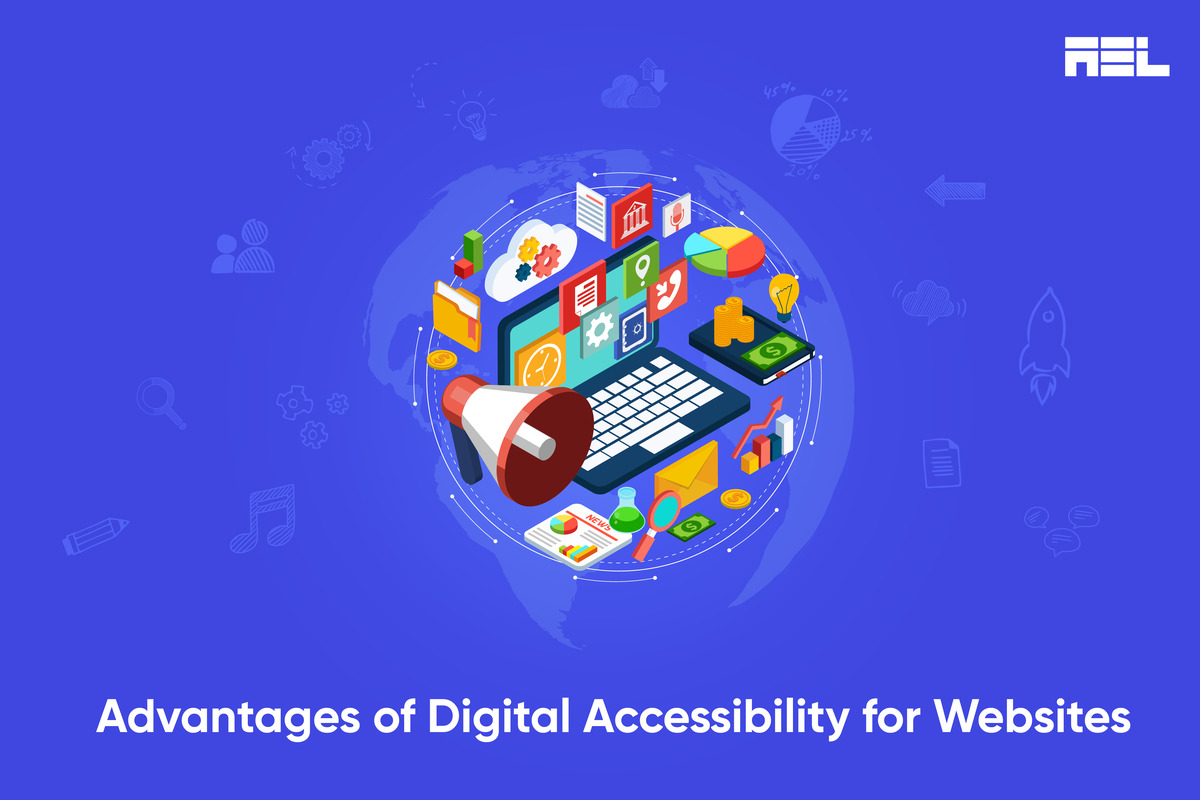The internet has become an integral part of our day-to-day routines, giving us access to abundant information and knowledge. However, a lot of people worldwide face difficulties as a result of various limitations. Digital accessibility ensures that users can collaborate with and benefit from advanced digital products, like websites and mobile applications. In this article, we will understand the basics of digital accessibility and its importance for websites.
Table of Contents
Digital Accessibility Explained
Advanced accessibility depends on four standards characterized by the Web Content Accessibility Guidelines (WCAG), which are global guidelines for web accessibility. These standards are as per the following:
- Perceivable: Web content should be introduced in a way where users can get to it through multiple senses.
- Operable: Web content must be accessible using different devices, such as a mouse, keyboard, or voice commands.
- Understandable: Web content must be clear and consistent in its meaning and functionality.
- Robust: Web content must be compatible with current and future technologies, including browsers and assistive technologies.
The Impact of Inaccessible Websites
Inaccessible sites can have negative results for people, associations, and society in general. Some significant effects include:
- Exclusion: Inaccessible websites can keep individuals with disabilities from getting to data, services, opportunities, and participating in society. This may result in social exclusion, discrimination, and inequality.
- Lower Engagement: Users experiencing difficulties and challenges on inaccessible websites can encounter disappointment and frustration, prompting decreased engagement, retention, loyalty, and trust.
- Legal Issues: Inaccessible websites can subject organizations to legal risks and liabilities assuming they abuse accessibility regulations and guidelines present in numerous nations and regions. This can lead to lawsuits, claims, fines, penalties, reputational harm, and loss of customers.
- Competitive Disadvantage: Inaccessible websites can restrict the reach and income potential of organizations by barring a huge and growing portion of users who have disabilities or could benefit from accessible features. This can result in missed opportunities for growth, development, advancement, and competitiveness.
Advantages of Digital Accessibility for Websites
On the other hand, accessible websites can have a positive impact on people, organizations, and society in general. Among the advantages are:
- Inclusion: Accessible websites empower individuals with disabilities to access information, services, and opportunities and participate in society. This boosts social inclusion, diversity, and fairness.
- Satisfaction: Accessible websites induce satisfying and pleasant user experiences for all customers, increasing engagement, retention, loyalty, and trust.
- Compliance: Legal risks and liabilities are reduced by accessible websites that comply with accessibility laws and regulations. They likewise exhibit social obligation and a promise of accessibility.
- Opportunity: Accessible websites extend the scope and revenue generation of organizations by drawing in and retaining an enormous and growing portion of users who have disabilities and can benefit from accessible features. This sets out opportunities for development, advancement, and competitiveness.
Key Considerations for Digital Accessibility
Several key considerations contribute to digital accessibility for websites:
- User Needs: Understanding and addressing the needs and preferences of users with different disabilities and how they use the web.
- Accessibility Standards: Following accessibility standards and guidelines, such as WCAG, to make web content perceivable, operable, understandable, and robust.
- Accessibility Tools: Utilizing accessibility tools to evaluate and improve the accessibility of websites and simulate how users with different disabilities experience the web.
- Accessibility Culture: Establishing an accessibility culture within an organization to promote awareness, knowledge, skills, and motivation for digital accessibility.
Implementing Digital Accessibility
Implementing digital accessibility for websites is an ongoing process that involves planning, execution, evaluation, and maintenance. The steps involved in implementation include:
- Establishing Roles and Goals: Defining goals and objectives for digital accessibility and assigning roles and responsibilities to staff and stakeholders involved in web design and development.
- Conducting Audits and Assessments: Auditing and assessing website accessibility using tools and user testing to identify and prioritize accessibility issues and gaps.
- Developing Action Plans and Strategies: Creating action plans and strategies to address identified accessibility issues and gaps, using accessibility standards, and best practices, and allocating resources and timelines for implementation.
- Implementing Fixes and Solutions: Applying solutions and fixes to improve website accessibility using web design and development techniques, tools, and frameworks that support accessibility.
- Monitoring and Evaluating Outcomes: Monitoring and evaluating the impact and effectiveness of implemented solutions and fixes using accessibility tools and user testing.
- Maintaining and Updating Accessibility: Incorporating accessibility into regular web maintenance processes, such as content updates, design changes, and bug fixes, to ensure ongoing accessibility.
The Future of Digital Accessibility
Digital accessibility is a dynamic concept that adapts to the changing needs of users, technologies, standards, and practices. Several factors will shape the future of digital accessibility:
- Emerging Technologies: New technologies, including AI and VR, will offer new ways of interacting with web content but also pose new accessibility challenges.
- Inclusive Design: Inclusive design will consider the diversity of human abilities, needs, and preferences from the beginning, creating products and services that work well for everyone.
- Accessibility Awareness: Awareness of accessibility will grow among different groups of people as they experience the benefits of accessible websites as users or providers.
Conclusion
Digital accessibility is crucial for websites as it ensures that everyone can access information and services on the web, regardless of their abilities or impairments. It also brings benefits to organizations and society by promoting inclusion, satisfaction, compliance, and opportunity. Achieving digital accessibility requires considering user needs, following accessibility standards, utilizing accessibility tools, and fostering an accessibility culture within organizations. Moreover, organizations should recognize that online accessibility is an evolving concept that aligns with the changing needs of users, technologies, standards, and practices.




